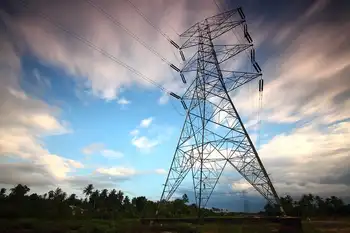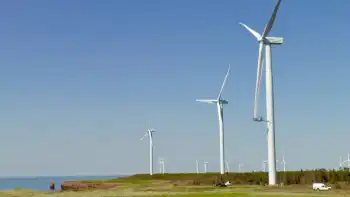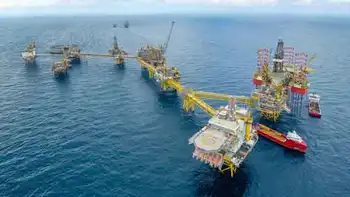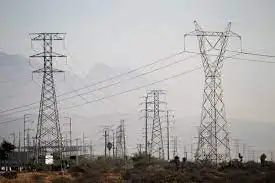Is Tesla the future, or “Government Motors”?
As part of the roadshow to drum up interest in Tesla's initial public offering that prices, Musk showed potential investors a map of the electric carmaker's San Francisco-area headquarters and the nearby assembly plant it plans to acquire. Marked for easy reference was Tesla's location next to corporate neighbors like Google Inc and Apple Inc. Nothing beyond the East Bay of San Francisco appeared.
"Why should we succeed? Why wouldn't we get steamrolled by one of the big car companies?" Musk said, raising a question many analysts and industry executives believe remains open.
His answer: start-up culture will make Tesla nimble where Detroit has been slow-moving, unwilling to bet big on his vision that one day in the not-too-distant future every car on the road will be driven by electricity instead of oil.
But a review of Tesla's turbulent past shows that a string of deals with the kind of old-guard auto companies Musk loves to diss — including Daimler AG and Toyota — and the deep pockets of the U.S. federal government have been crucial to keeping the electric car maker on the road in its moments of deepest crisis.
With skepticism mounting about the cost and adoption of pure electric cars over the next five years, investors will have to decide whether Tesla represents a high-risk, high-return bet on an emerging technology or a Silicon Valley version of "Government Motors."
Musk, the inspiration for Robert Downey Jr's Tony Stark character in "Iron Man" who makes a blink-and-you-miss-it cameo in this summer's sequel, sees it very differently.
"We're a Silicon Valley company. Closer to an Apple or a Google than to a GM or Ford in the way we operate, the DNA, the operating system of Tesla. I don't think that's something that GM or Ford is going to be able to replicate — ever," Musk said.
To underscore that point, Musk took shots at GM when the carmaker was sliding toward bankruptcy last year. "What if former GM product chief Bob Lutz were to call up and say we'd like to buy Tesla," Musk said in a presentation in San Francisco, posing a question he said he had been asked before. "I would say, 'You can't afford it.'"
Earlier, Musk had dismissed Lutz's proudest achievement, the plug-in Chevrolet Volt, as "not very exciting." GM's earlier and now-scrapped EV1: "not a good car," Musk has said.
For his part, Lutz, 78, says that Tesla would be lucky to replicate Detroit, which at least knows how to assemble and sell cars to the mass market.
Though Lutz has confessed to a grudging admiration for Tesla's push to develop the $109,000 all-electric Roadster when major automakers were balking at electric cars, he says Tesla is underestimating the complexity of the business.
"So far, all of Tesla's shortcuts have failed," Lutz said in an email to Reuters. "They seem to hold the usual Silicon Valley view that that region is the sole repository of brainpower in the United States and everyone east of the Sierras is a dim-witted dinosaur."
On the verge of becoming a public company, Tesla has an eccentric and charismatic CEO with Hollywood buzz in Musk, 39, and an exhaust-free roadster than can beat a Porsche from a standing start.
Ahead of one of the most talked about IPOs of the year and the first by an American automaker since Ford's debut in 1956, Musk has been selling investors on the idea that his seven-year-old startup is "a freaking technology velociraptor," ready to revolutionize the way Americans buy and drive cars.
For Tesla, however, the toughest road still is ahead.
Since its start, the company has burned through $230 million of cash while recording revenue of just $148 million. It expects its losses to deepen as it devotes the next year to preparing to manufacture Model S, a luxury electric sedan it plans to launch in 2012 and to sell starting from $57,400.
To build Model S at a Fremont, California assembly plant abandoned by Toyota will require the company to meet tight deadlines under the watchful eye of the U.S. Department of Energy, which has subsidized Tesla with $465 million in loans.
"From the beginning we have worked closely with automakers and auto suppliers and will continue to cooperate with them in the electrification of cars," said Tesla spokesman Ricardo Reyes. "We are very grateful for our partnership with Daimler and Toyota."
The storyline of a scrappy startup founded by a charismatic visionary out to reinvent the way the auto industry works is a familiar one in Detroit. It has seldom ended happily, and the gas engine has outlived previous reports of its demise.
As early as 1918, GM engine pioneer Charles Kettering had predicted the death of the combustion engine because of its energy inefficiency.
Preston Tucker took on GM, Ford and Chrysler just after World War Two with innovative car designs that included safety innovations like a headlight that turned with the car and a shatterproof windshield. His company assembled just a handful of cars before going bankrupt in 1949.
In the mid-1970s, John DeLorean, who had turned around GM's Pontiac brand in the 1960s with the pioneering GTO muscle car, launched his own sports car with stainless steel body and gull-wing doors. The project folded and the DeLorean became best known as the improbable time machine in the "Back to the Future" movies.
GM's Lutz, a legendary "car guy" who became something of a foil and foe to the much younger Musk in the final years of his career at the company, sees some similar hubris at Tesla. "These geniuses always get their comeuppance," he said.
One major risk for Tesla and other electric carmakers is whether American consumers will buy cars that will require them to loop home for hours of charging. Cold weather will cut into the advertised range for the lithium-ion batteries that power the new electric vehicles.
So will conveniences drivers take for granted like running the heater or the air conditioning, a reason Tesla has patented a system to allow a driver to switch a Model S into "extended range" mode to eke out a few more highway miles.
Most major automakers with the exception of Nissan expect that "range anxiety" to limit electric vehicles to a far smaller share of the market than hybrids like the Toyota Prius or plug-in hybrids like the upcoming Chevrolet Volt, which will carry an onboard gas engine as insurance.
The other huge hurdle is cost of the batteries. For the Roadster, Tesla took 6,831 laptop batteries and wired them together in a liquid cooled package that weighs about 900 pounds and cost some $30,000 to produce initially.
Analysts differ on how much and how quickly battery prices will drop. They agree that it's a crucial variable in whether electric car ventures like Tesla succeed. An industry group representing the Detroit automakers has set a long-range target of cutting costs to roughly a quarter of current levels.
But Boston Consulting Group has challenged whether that can be achieved without a breakthrough in battery chemistry no one can predict. Absent a sharp drop in battery prices from higher production or new technology, only extended government subsidies can make electric cars affordable, analysts say.
In a report earlier this month, the National Academy of Sciences also concluded that pure electric vehicles would remain a small part of the market because of their limited range and relatively high cost.
"If gas stays at $3 per gallon, all of these technologies will be hard to justify," said Jay Baron, a researcher at the industry-funded Center for Automotive Research who contributed to the study. "Unless something drastic happens to the price of oil, all of these technologies will be slow to move into the market."
Even if the technology works, there's the question of whether the Tesla brand can build on its early buzz. A May survey by Deloitte Consulting found that most consumers said they would be most likely to buy an electric car from Toyota, Honda Motor Co or Ford.
Tesla trailed established luxury brands like Audi, BMW, Lexus and Cadillac with just 2 percent of those surveyed saying they would considering buying one.
Oliver Hazimeh, Detroit-based director of electric transportation consulting at PRTM, believes that automakers will succeed in cutting battery costs by more than half over the next decade. But he sees a hard road ahead for Tesla as a stand-alone brand.
"It's an interesting case because they were really a pioneer in the electric car space when no one else was there," he said. "But going forward, the question is can they carry on as a niche player? The answer, I believe, is not really."
Tesla has delivered just over 1,000 of its Roadsters after early setbacks and a slower-than-expected start of production. The list of owners includes celebrities such as George Clooney, Jay Leno and Red Hot Chili Peppers front man Anthony Kiedis.
But Musk is betting that Tesla can make the leap to mass market almost overnight, building up production, engineering and sales operations in 24 months that the rest of the industry has had a century to develop.
The goal is to sell 20,000 of the Model S sedans per year and then spin off variants, including a van and an SUV-style crossover. While the Roadster has a range of 236 miles per charge, Tesla plans for the cheaper new model still in prototype to offer 160 miles on a charge.
An upgrade will offer a bigger battery and a 300-mile range. Tesla is also designing the Model S so its battery can be readily swapped out and it can be recharged quickly at roadside facilities for electric cars that do not now exist but might someday.
By capping production costs and selling customers on a range of upgrades expected to add another $25,000 to the price of the average Model S, Tesla expects to maintain a margin of 25 percent on the car, a wild-eyed target by auto industry standards.
At the same time, Musk wants to pioneer a new way of selling cars in the United States by cutting out franchised dealers. Tesla has 12 stores now and expects to have 50 by 2012, inventory-free storefronts it uses to promote the brand and solicit orders.
Unlike any other automaker, Tesla plans to control all of its own sales and service work — dispatching "Tesla Rangers" to fix cars when the customers are too far from a store to drive in or be towed in for service.
Musk says the established system of independent car dealerships creates "a fundamental economic inefficiency" and a shopping experience "on par with going to the dentist." But the company says in its prospectus that its plans to run its own stores could run afoul of state franchise laws and the costs of dispatching technicians to far-flung locations.
Analysts see Musk's goals as a stretch — even for an executive whose vision includes eliminating the use of oil in transportation and helping mankind settle other planets through his company Space X. "The grail is to help make life interplanetary," Musk has said.
In the short term, Tesla's push to protect high pricing will run into a wall of coming competition from the likes of GM's rechargeable Volt and the pure electric Nissan Motor Co Leaf, both of which launch later this year. The Model S will also have to compete with established and future offerings from luxury brands such as BMW, Audi and Lexus.
"At the end of the day this is a high fixed cost industry," said Jeremy Anwyl, chief executive of auto tracking firm Edmunds.com. "The deck is stacked against Tesla even with the help they've had."
The blind call that helped bail out Tesla Motors Inc during its first major crisis came from an unlikely place: suburban Detroit, the heart of the established auto industry.
In December 2007, with the U.S. auto industry sliding toward crisis, BorgWarner Inc executive Bill Kelley read about Tesla's problems finding a reliable transmission.
Kelley, who is in charge of BorgWarner's advanced technology program, saw an opportunity to sell Tesla a low-cost solution to a problem that threatened to kill the Roadster.
But sitting in Michigan, Kelley had no contact at Tesla, so he sent a blind email to the administrator of a website Tesla had set up to promote the Roadster. "I said, 'I think I can help you,'" he recalled. "A few days later, I got the call, 'How can you help us?'"
The exchange took place during a storm at Tesla. Two months earlier, the firm had scrapped an agreement to use Magna International to deliver transmissions. In December, the company fired founder Martin Eberhard as chief executive, a move that touched off a high-profile dispute with Musk.
Eberhard used his blog to describe what he called a "bloodbath" with 26 Tesla workers fired — about 10 percent of the start-up's work force. Musk shot back that Eberhard had hidden evidence of cost overruns from the Tesla board. Tesla later settled a lawsuit by Eberhard and dropped its own claim against him.
Kelley flew out to meet Musk and the new chief executive he had installed, Ze'ev Drori, at Tesla's headquarters in Palo Alto, California in March 2008 to make his pitch.
Eager to use the Tesla contract as a demonstration of technology BorgWarner had in the works, Kelley offered to build the Roadster transmission for a price he expected would be seen as shockingly low. BorgWarner was ready to use technicians attached to its Auburn Hills research unit to build the low-volume order on the spot, he told Musk and Drori.
"I made an offer I thought it would be impossible for them to say no to: I told them that we would do it for $100,000," Kelley told Reuters. To his surprise, Musk seemed uninterested, believing that Tesla could engineer a better transmission from scratch.
At the time, Musk was offering to launch the Roadster with an interim transmission and then swap out for a new and improved model — a "public beta" launch common in software but unheard of in the auto industry.
"They didn't want to get off that horse and get on another," Kelley said. "In the end, we had a kind of bake-off, and we prevailed."
After winning the Tesla order, BorgWarner delivered its first test transmissions in June — three months after the first meeting. It agreed to sell Tesla small batches of the part to allow it to keep Tesla's cash burn at a minimum. And when it needed a stronger bracket for the part, it turned to an airplane supplier for a high strength aluminum bracket. "There was no time left for a more elegant solution," Kelley said.
BorgWarner, now building its last 150 transmissions under contract for Tesla, views the deal as a success, a win-win that allowed it to develop a new product line while allowing Tesla to shift into full production of the Roadster.
But even then aspects of the process threatened to get lost in translation between Silicon Valley and Detroit. At one point, Tesla failed to file a purchase order for new transmissions with the three-month lead time BorgWarner expected and needed. The glitch briefly threatened Roadster production.
"For us, it was like, this is how you do business," Kelley said. "Unlike, say, computer chips, when you're making things from steel, it just takes time."
Tesla's next big crisis came in the fall of 2008 when it failed to secure $100 million from venture investors. Like its larger rivals, it was hit hard by the 2008 credit crunch.
Down to its last $9 million in cash, Tesla cut 24 percent of its work force, delayed development work on Model S and launched a $40 million convertible debt financing round to keep the company alive.
Musk, who had invested $55 million of his own money into Tesla by then, also stepped in as chief executive. "I just had too many chips on the table with Tesla not to take on the management myself," he said at the time.
Musk evokes strong emotions in people who have worked with him. They either love him or hate him. But even those who were fired by him and dislike what they describe as a ruthless streak also say they admire his drive and vision.
The credit crunch made Musk the unlikely face of Tesla's turnaround. Uneasy in groups, he has sometimes struggled with the industry events and presentations.
In an April 2009 appearance, Musk fell into giggles when talking about the risk that Roadster batteries could explode in flames — a "runaway thermal event" of the kind that has destroyed laptops. Tesla has at least two patents on systems to prevent the risk of such a potentially fatal event, but Musk briefly found the question funny. "What's the worst that can happen?" he said with a laugh.
His first challenge as CEO was to reassure jittery customers in line for a Roadster. By that point more than 1,200 people had put in orders. But less than 30 cars had been delivered. Potential customers were getting increasingly nervous about the fate of their deposits of between $5,000 and $60,000 that Tesla was using to fund its operations.
Seeking to head off what could have become a run on Tesla's cash, Musk said he would personally guarantee that the automaker would make good on all of its orders.
"I've gone on record as saying that I am personally standing behind delivering the cars and the deposits for the company," he said in October 2008. "I have the means and wherewithal to do so. So people should have absolutely zero concern about their deposit."
The gambit worked but just over a year later, Musk had no money left, according to a court filing. "About four months ago, I ran out of cash," Musk said in a February 2010 filing. "I had to obtain emergency loans from personal friends. These loans are the exclusive source of cash that I have."
In June 2008, Musk had separated from his wife, fantasy novelist Justine Musk. Justine contested what she called an "extremely harsh" 2000 post-nuptial agreement that allowed her to keep her books while allowing Elon to keep over $20 million in assets, including a gull-winged McLaren supercar worth $1 million.
Justine Musk has estimated Elon's worth at $1 billion. He stands to make about $14 million from the sale of Tesla shares in its IPO but will remain the company's largest shareholder with a stake near 29 percent.
Musk rose to fame when the Internet payment company PayPal he developed was bought by eBay for $1.5 billion in 2002. In an earlier success, he had sold directory provider Zip2 Corp to Compaq for $300 million in 1999.
But he had also opted to invest most of his wealth in three new ventures — Tesla, SpaceX and solar power provider Solar City. He once described the thought of a quiet retirement "a torture," recalling that he once challenged himself to live on less than $1 per day after leaving South Africa for Canada as a 17-year-old student.
"People tend to overrate risk on a personal level," Musk told an interviewer in 2008.
Darryl Siry, Tesla's former chief marketing and sales executive, who left Tesla in December 2008 due to "disagreement in strategy," said Musk's ability to stay calm in the midst of crisis was almost inhuman.
"His tolerance for risk is beyond anything I have seen," said Siry. "At the point when I was nauseous in the situation we were in, he was in his element."
Musk, whose investment in Tesla has surpassed $70 million, became the key to winning new backing for the company from established automakers and Washington.
As part of the U.S. government's loan, Musk has to hold on to 65 percent of his stake in Tesla or risk default. Justine Musk is seeking a 10 percent share of Tesla stock, $6 million, child support and a Roadster.
Tesla says it does not expect Musk's divorce to endanger its government funding, impair his ability to lead the company or force him to dump its stock.
"By allowing this situation to turn into a lawsuit.... Elon is taking a risk, which, to be utterly frank, no one seems to understand," Justine Musk wrote in a 2010 blog.
After riding out the financing crunch, Musk scored a major win by convincing German auto giant Daimler to collaborate in January 2009. Under the initial deal, Tesla agreed to supply the lithium-ion power packs and recharging systems for 1,000 Smart electric cars.
The supply agreement provided another way for Tesla to generate cash and provided much-needed validation from an established automaker for the start-up.
"You've got the company that invented the internal combustion car coming half way around the world to Tesla," Musk said in the IPO roadshow. "It's like Gutenberg saying, 'Hey can you make a press for me.'"
Daimler followed by buying a nearly 10-percent stake in Tesla in May 2009 for an undisclosed sum. Musk said the deal was "approximately in the middle between zero and $100 million."
Daimler, which has since added another 500 battery pack orders and asked Tesla to make power packs for a small Mercedes electric car launching, in 2011, has seen its investment in Tesla roughly triple in value to over $160 million.
"The decision we took... seems to be a rather good one as the company is going public," said Daimler Vice President Herbert Kohler, who sits on Tesla's board. "That means that from the economic side as well it was the right engagement."
Musk, Kohler says, was key to making the deal happen. Daimler has made sure they will be dealing only through him by locking him in as CEO until the Model S launch. Daimler has the right to pull out of Tesla if Musk leaves the company before 2012, according to Tesla's filing with securities regulators.
"Elon is a very important part of Tesla," Kohler said. "Maybe without Elon Musk as CEO, we wouldn't have decided to go this way."
With Daimler on board, the focus for Musk shifted to clinching subsidized U.S. government loans. Over the past three years, Tesla had been courting political support for its expansion from both parties. California Governor Arnold Schwarzenegger, a key ally, returned his Roadster after finding the low riding car too small and is now awaiting his Model S.
As early as 2007, Bush administration Secretary of State Condoleezza Rice had showed off the Roadster to a visiting Australian official and taken it for a test ride. She gave it a thumbs up and pronounced the ride like "a little rocket ship." She added: "We expect to see great things for Tesla."
But by early 2009, Tesla's government affairs chief Diarmuid O'Connell had turned his attention to the Democratic Congress and the Obama administration to lobby for funding for both the Model S and its nascent battery pack business.
The pitch blending a call to support the environment and old-fashioned American innovation worked. Tesla was one of the first three automakers — along with much larger rivals Ford and Nissan —to qualify for loans under a 2008 program to support electric cars.
Tesla has drawn $45 million of the $465 million government loan, though it has tried to distance itself from potential criticism for taking a subsidy.
"This isn't stimulus money. This isn't bailout money," Musk said at the time. By November 2009, buoyed by the government funding, Tesla was readying plans to file for its IPO, people close to the process said.
By the time that Tesla filed for its IPO in January, most of the key elements of its strategy were in place — except for one glaring hole: it had not settled on a site to build the Model S.
Once again, it was an established auto company that rode to the rescue and Musk who closed the deal. Akio Toyoda, the president of Toyota Motor Corp, had spent the early months of 2009 trying to ride out a safety crisis that forced the world's largest automaker to recall over 8 million cars.
Toyota had also run into protests from the United Auto Workers and sympathetic politicians for a decision to shut down NUMMI, a Fremont, California plant it had used to build the Corolla and Tacoma in a partnership with GM.
When Toyoda sent word to Musk in March that he was interested in meeting, Musk went on a charm offensive. He invited Toyoda to dinner at the Bel Air mansion he rents for $50,000 a month and let Toyoda take the wheel of the Roadster in the Westwood area of Los Angeles.
Toyoda, 54, an avid test driver, said he decided on the spot to work with Musk.
"Musk-chan, I love him," Toyoda said, struggling to express his admiration for the younger entrepreneur.
Hoping to rekindle some of that spirit at Toyota, Toyoda agreed to invest $50 million in Tesla. In a related agreement, Tesla agreed to pay $42 million to acquire NUMMI.
Toyota, the market-leader in hybrid technology, also agreed to help Tesla with sourcing parts for the Model S. The two sides said they intended to work together in launching electric vehicles. Musk has told investors he expects Toyota to be a customer.
"The interest in buying Tesla stock increased tremendously after the Toyota announcement," said Greg Dietrick, a broker at SharesPost, an online market for private company shares.
But the UAW remains skeptical Tesla can run its big new plant at anything near capacity.
"Tesla is a kind of smokescreen," newly elected UAW president Bob King said earlier this month, calling Toyota's investment in Tesla a kind of "sleight of hand" aimed at tricking California voters into thinking jobs had not been lost. "Californians should be outraged."
While analysts say Tesla faces long odds, the company has created a brand with cachet and won Daimler and Toyota deals that give it a shot at success.
Benjamin Stein and Kris Tuttle, analysts with Research 2.0, said Tesla shares will not begin to trade on fundamentals until 2013. While the IPO looks to have priced the company at "stretch" or best case levels, a call option on Tesla would be "worth considering," they said.
"Tesla shares are only for those who relish high-octane investment," they said.
Despite the sniping on both sides, GM's Lutz is unwilling to write off Tesla and Musk — at least not yet. "Tesla may still prove to be the exception," he said.
Related News
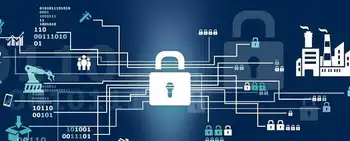
Group to create Canadian cyber standards for electricity sector IoT devices
TORONTO - The Canadian energy sector has been buying Internet-connected sensors for monitoring a range of activities in generating plants, distribution networks and home smart meters for several years. However, so far industrial IoT device makers have been creating their own security standards for devices, leaving energy producers and utilities at their mercy.
The industry hopes to change that by creating national cybersecurity standards for industrial IoT devices, with the goal of improving its ability to predict, prevent, respond to and recover from cyber threats.
To help, the federal government today announced an $818,000 grant support a CIO Strategy Council project oversee…


